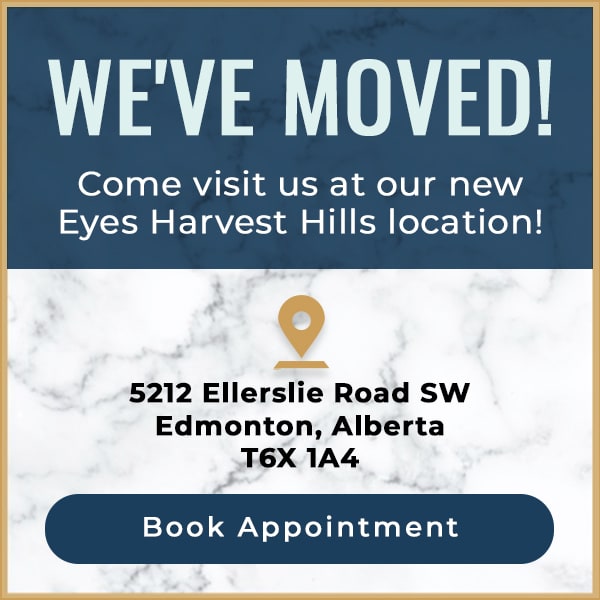There is growing evidence that suggests myopia (nearsightedness) is becoming more and more common—especially among children and young adults—largely due to changes in our lifestyle and how we use our eyes.
Although myopia causes blurry vision, it affects more than just your visual clarity. When it develops in childhood, myopia can progress into high myopia and put you at greater risk for certain eye diseases and conditions.
While myopia can’t be reversed, it can be corrected, and its progression can be managed with myopia control strategies. For adults, laser eye surgery may also be an option to consider for long-term myopia correction without glasses or contact lenses.
Understanding Myopia
Myopia is a refractive error that occurs when the eye grows too long from front to back, or the cornea is too steep, causing light rays to focus in front of the retina instead of directly on its surface. This leads to objects in the distance becoming blurred while your close vision remains largely unaffected.
Data from the World Health Organization indicates that the global prevalence of myopia is currently estimated to be 22.9%, and by 2050, it’s expected that roughly half the world’s population will be affected by nearsightedness.
What Causes Myopia?
Genetics play a significant role in myopia development, but environmental factors have also surged in influence, particularly with the popularity of screen-based activities and reduced time spent outdoors.
The interplay between genetics, lifestyle, and environmental factors can accelerate the onset of myopia. Research suggests that children with myopic parents are more likely to develop myopia earlier and it tends to progress faster in children who spend a lot of time doing near-work activities.
Why Address Myopia Early?
The implications of living with myopia extend beyond the inconvenience of wearing corrective lenses. High myopia can lead to more serious eye conditions, such as retinal detachment, glaucoma, and even macular degeneration. In children, uncorrected myopia can affect academic performance and, if allowed to progress, may significantly increase the risk of future eye health complications.
How Myopia Progresses
Myopia is not a static condition—it generally emerges in childhood and continues to progress until early adulthood, when eye growth typically stabilizes. This progression can be swift, with some experiencing dramatic changes in their prescriptions over a relatively short period.
If you or your child have myopia, talk to your eye doctor about how quickly it’s progressing. We may be able to recommend myopia control options.
Treatment Options for Myopia
Since myopia is so common, there are a myriad of options when it comes to correcting it. These range from the classic options of glasses and contact lenses to more advanced myopia control technology.
Glasses & Contact Lenses
Glasses have long been the traditional and effective method for correcting myopia. They’re simple, noninvasive, and can be an accessory to your personal style.
Contact lenses, which sit directly on the eye, can offer an even wider field of clear vision. Recently, multi-focal contacts and orthokeratology (ortho-k) contact lenses have emerged as more targeted tools for myopia control.
Ortho-K Contact Lenses
Ortho-k contacts are a nonsurgical option that involves wearing special rigid gas-permeable contact lenses overnight. These lenses gently reshape the cornea while you sleep, minimizing the elongation of the eyeball that’s associated with myopia.
These lenses provide the convenience of improved vision during the day without the need for corrective eyewear. Notably, they serve as a proactive, preventive measure rather than a method for reversing existing myopia. Ortho-k is temporary, so if you wish to discontinue use, your eyes will revert back to their original shape.
MiSight 1 day Contact Lenses
MiSight contact lenses, developed by CooperVision, have gained traction as the first soft contact lens specifically designed for myopia management. Clinical trials demonstrate that MiSight lenses can slow down myopia progression in children 8–12 years old.
Other Myopia Control Options
Low-dose atropine eye drops, Essilor Stellest lenses, and the MYAH system for measuring axial length can also be excellent tools in helping manage myopia. Your eye doctor can help you determine the best myopia control route for your specific eyes and lifestyle.
Surgical Solutions: When Glasses Aren’t Enough
For those seeking a more long-term solution, refractive surgeries like LASIK and PRK offer the possibility of not just correcting but also reducing a person’s dependence on wearing glasses or contact lenses to correct nearsightedness.
These procedures can treat myopia by reshaping the cornea to adjust how the eye focuses light. However, they are irreversible and come with potential risks and limitations, making them a serious decision for each person.
Tips for Managing Myopia
Keeping a safe distance from screens, using good lighting, eating a healthy diet, and getting sufficient sleep are the starting blocks for managing myopia. For children, it’s especially important to establish these practices early to stem the progression of myopia.
Even with those habits, timely eye exams remain the key to early detection and intervention. Routine checkups equip you with the knowledge to make informed decisions about your family’s eye health and your options for myopia management.
Keep Your Vision Healthy & Clear
The field of eye care is evolving, and so is our understanding of myopia. As new research surfaces and innovative solutions emerge, the conversation around myopia no longer revolves solely around its correction but also its potential control and reversal.
Myopia control is a growing field that already offers a variety of proven methods for slowing myopia progression. If you or your child have myopia, come see us at Eyes Harvest Hills. Let’s talk about your options for myopia control.




